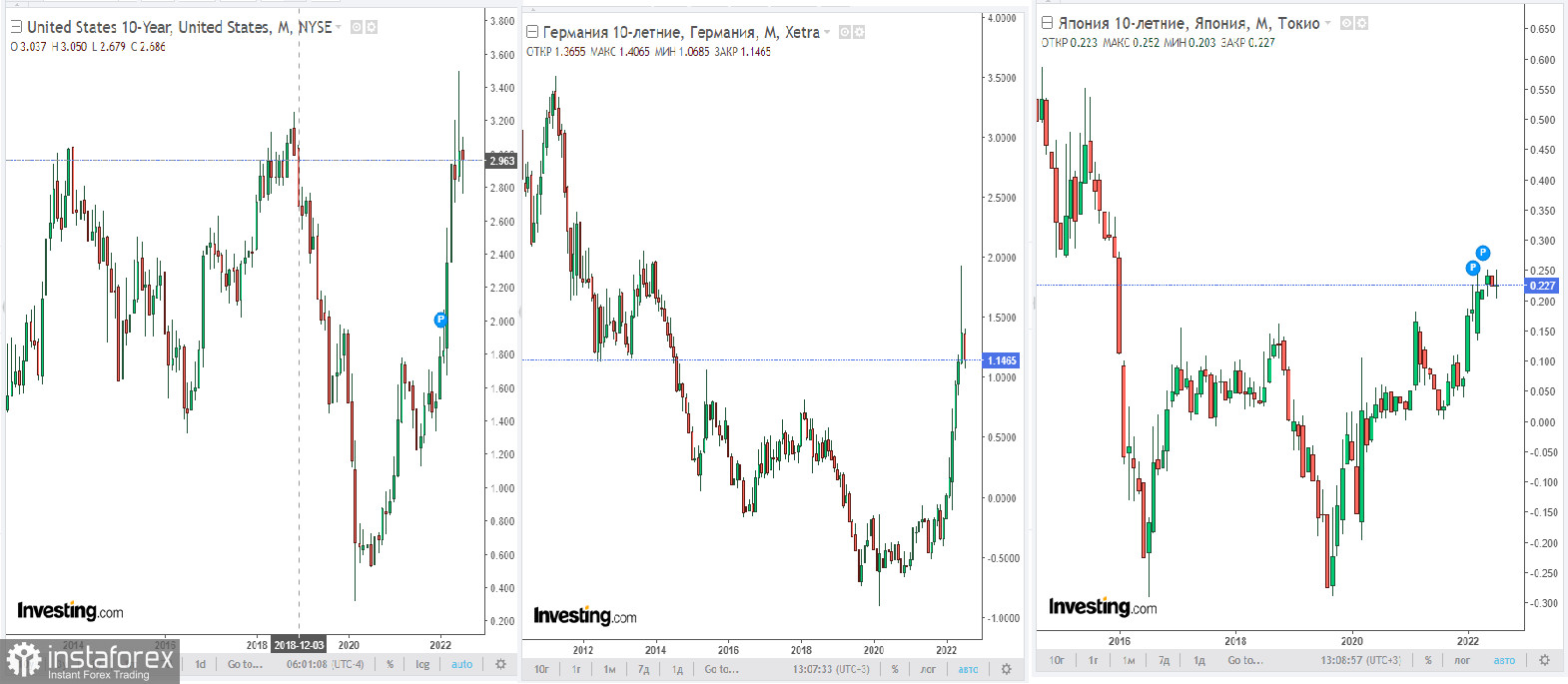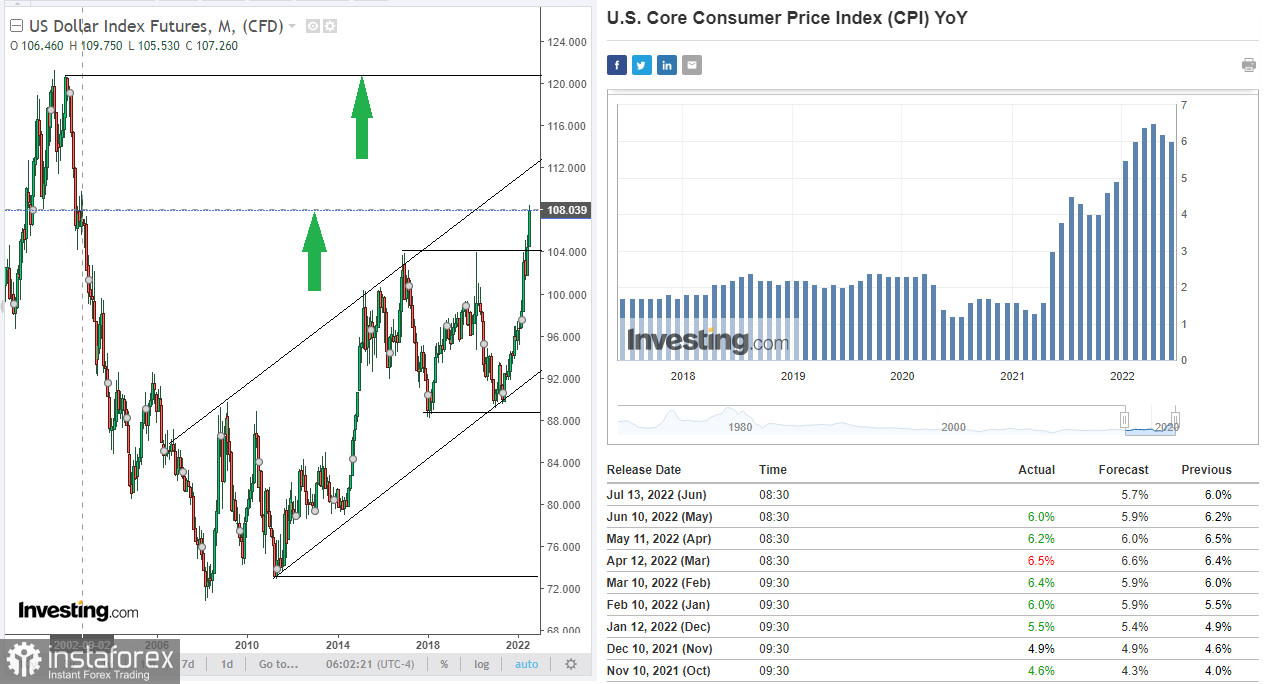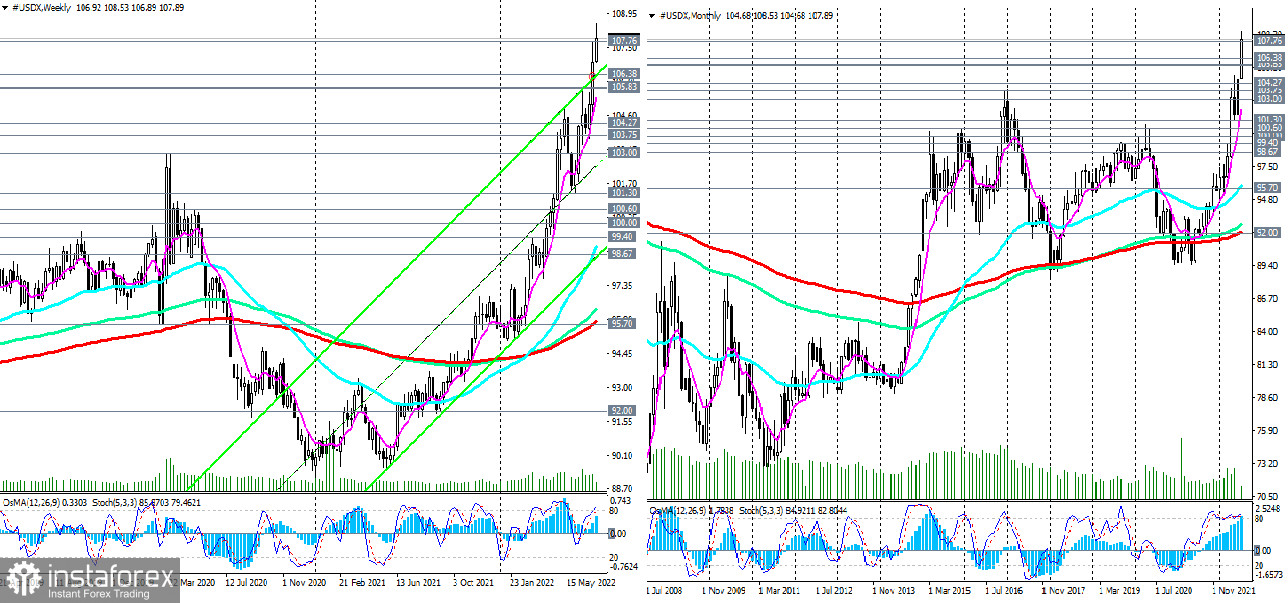As of this writing, most of the major dollar currency pairs are trading in a narrow range, remaining under pressure from the US dollar. The dollar continues to dominate the market, receiving support from the Fed, which is pursuing the most stringent monetary policy (at the moment) in comparison with other major world central banks.
The dollar is also in strong demand as a defensive asset in the face of geopolitical and economic uncertainty, as well as against the backdrop of a growing divergence of curves reflecting the yield of major US and most other (other economically developed countries) government bonds. If yield grows, then the dollar will continue to strengthen. The increase in the yield of US bonds is promoted, in turn, by the Fed's monetary policy, which tends to tighten further.
In this situation, American strategic investors prefer the rising dollar to US government bonds, which currently yield 2.961% per annum (10-year bonds). But foreign investors choosing between US government bonds and government bonds of national economies choose American ones as more profitable (see comparative screen).

The purchase of US government bonds (and other assets of the US stock market) is made in dollars, and the purchase of a dollar for the national currencies of other countries contributes to the natural strengthening of the dollar against them.
The yield of bonds, as is known, increases with the growth of the volume of their sales. In other words, the more actively government bonds are sold, the more profitable they become for new investors. At the same time, investments in government bonds have two main dangers that reduce income—rising inflation and the central bank interest rate. And this is the situation in the US right now: the Fed's interest rate is rising, but inflation is not in a hurry to decline, remaining at the levels of 40 years ago (in March, the base annual inflation in the US, excluding food and energy prices, was 6.5%).

As early as last week, Fed Board member Christopher Waller announced the need for another interest rate hike of 75 percentage points this month and 50 percentage points in September, after which the pace of interest rate hikes could be reduced to 25 percentage points. In his opinion, inflation is a tax on economic activity, and the higher it is, the more it suppresses it.
The Federal Reserve sees the interest rate in the US at 3.5% by the end of the year (now it is 1.75%). The interest rate will increase by the end of the year at least 2 times, and the higher it is, the more expensive the dollar will be and the more profitable long-term investments will be.
St. Louis Federal Reserve President James Bullard also backed a more aggressive Fed monetary tightening last week, noting the desirability of a key interest rate level of 3.5% this year.
If you look at the chart of the dollar index (DXY), you can see that since March 2011, it has been in a stable long-term upward trend, and on Tuesday, it updated another multi-year local high at 108.42. Its breakdown will be a signal to increase long positions in DXY futures with the prospect of growth towards multi-year highs of 121.29 and 129.05, reached, respectively, in June 2001 and November 1985.

On the daily, weekly, and monthly DXY charts (in the MT4 trading terminal it is reflected as CFD #USDX), technical indicators OsMA and Stochastic are on the side of buyers. On the monthly CFD #USDX chart, Stochastic has been in the "overbought" zone since August last year, not wanting to get out of there, indicating a strong "bullish" momentum. Thus, from a technical point of view, everything also speaks so far in favor of long positions on the dollar and its index.
 English
English 
 Русский
Русский Bahasa Indonesia
Bahasa Indonesia Bahasa Malay
Bahasa Malay ไทย
ไทย Español
Español Deutsch
Deutsch Български
Български Français
Français Tiếng Việt
Tiếng Việt 中文
中文 বাংলা
বাংলা हिन्दी
हिन्दी Čeština
Čeština Українська
Українська Română
Română

